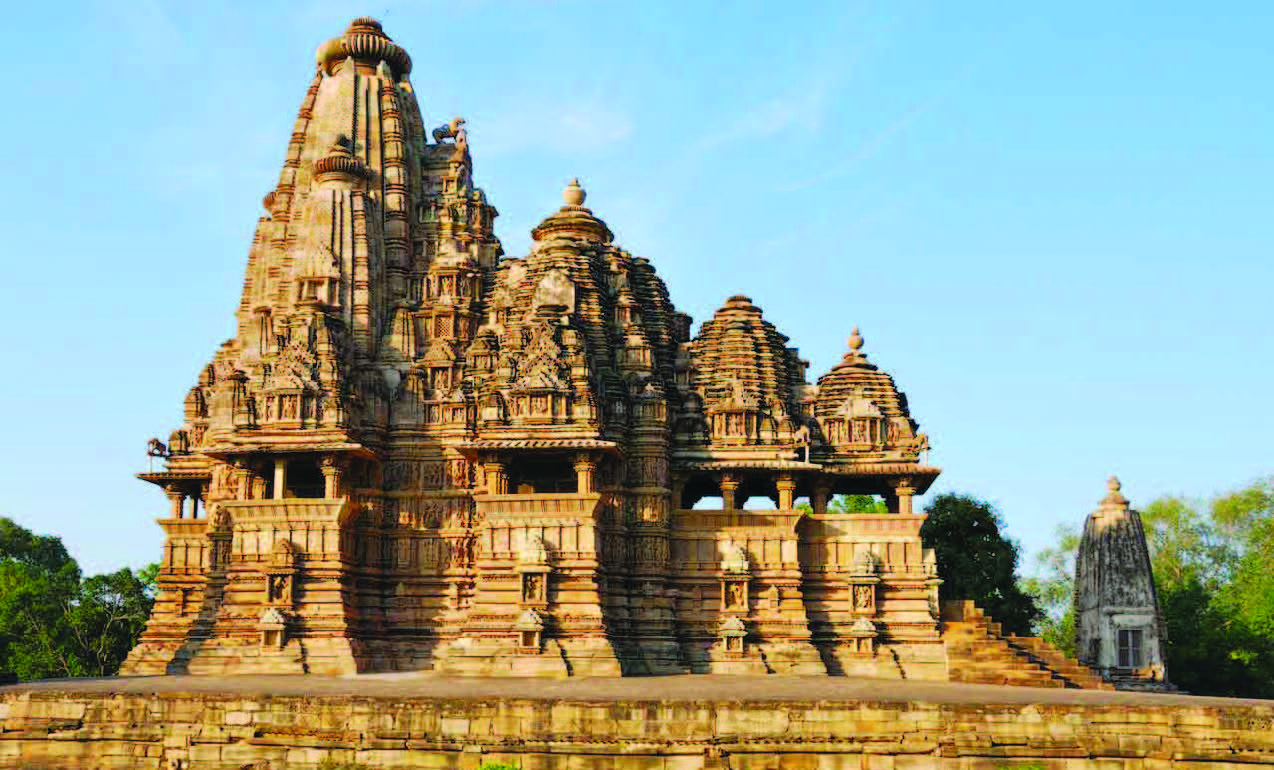
With three UNESCO World Heritage Sites under its belt, this central Indian state already has a prominent place on the tourist map of the country. With its rugged hilltop forts, beautiful palaces, intricately-carved temples, historic mosques and other monuments, Madhya Pradesh is the perfect place for time-travelling.
Famous for its sensual sculptures, this UNESCO World Heritage Site contains one of the best examples of temple architecture in India. Khajuraho’s temples were built by the Chandela dynasty, who ruled over central India between 950-1050 AD. Out of the 85 original temples, only 20 survive today. Most of them have soaring vertical spires or shikharas, which are believed to represent the Himalayas.
Khajuraho contains both Hindu and Jain temples, which are divided into the Western, Eastern and Southern complexes. It’s best to begin from the Western complex, either by taking an audio guide from the ASI ticket booth or hiring a guide. There is also a light-and-sound-show held every evening in Hindi and English, which narrates the history of the temples.
The largest and best-decorated monuments are found in the Western complex. The Kandariya Mahadev is a Shiva temple with an exquisite entrance, and a large number of carvings of Hindu gods as well as lovers. The Chitragupta temple has an impressive seven foot image of the sun god Surya drawing a chariot pulled by seven horses. The unique Chausath Yogini temple originally consisted of 64 small shrines dedicated to ‘yoginis’ or female spiritual leaders, of which only 35 survive now.
The Eastern complex includes both Hindu and Jain temples. The largest Jain temple now houses an image of Parshvanath, but was originally dedicated to the first ‘tirthankara’, Adinath. The Southern complex has two temples, dedicated to Vishnu and Hindu. The Chaturbhuj temple has a large idol of Vishnu, while the Duladeva temple is an ode to Shiva.
This UNESCO World Heritage Site contains some of the finest examples of ancient Buddhist architecture in India. Located at a distance of 40 kilometres from Bhopal, Sanchi is most famous for its Great Stupa (a dome-like monument housing Buddhist relics), which was built by the Mauryan emperor Ashoka. The stupa has four monumental gateways or ‘toranas’ covered with exquisite carvings. These depict scenes from Buddha’s life, Jataka stories and Buddhist history. Sanchi was a major Buddhist centre from the 3rd century BCE until the 12th century AD, and also contains the ruins of several other stupas, temples, pillars, monasteries.
BHIMBETKA
Located 46 kilometres from Bhopal, the Bhimbetka Hill contains a cluster of 14 rock shelters which house some of the best prehistoric rock art in the world. Now a UNESCO World Heritage Site, they are situated inside the Ratapani sanctuary. This densely-forested area also has several stunning naturally-sculpted rock formations. The cave paintings date back to the Mesolithic period, and explore themes such as hunting, dancing, music and animals. They also depict animals such as bisons, tigers, lions, wild boars, antelopes, and elephants, as well as religious and ritualistic symbols. They have been made primarily with red and white colours, with the occasional use of green and yellow. These colours were prepared using natural dyes, minerals, coal, and animal fat.
MAHESHWAR
A short drive away from Mandu and Indore, this small town is a popular pilgrimage centre with a rich architectural heritage. While Maheshwar has a long history, it was revived in the 18th century by the Holkar queen Ahilyabai. Ahilyabai shifted the capital from Indore to Maheshwar, consolidated the Maheshwar fort and constructed the city’s famous ghats and temples.
The imposing Maheshwar Fort is located on a hilltop overlooking the Narmada river. Its walls enclose the Rajwada or Ahilyabai’s royal palace; Devpuja, the shrine used by her; and the ‘rajgaddi’, her throne, on which a life-sized statue of the queen has been installed. It also contains various heirlooms of the Holkar dynasty.
Most of the activity is centred around its ghats, where pilgrims take a dip in the river Narmada. Maheshwar also has beautiful temples such as Kaleshwar, Rajarajeshwara and Ahileshwar, which have tall spires and carved balconies and doorways. To truly immerse yourself in the city’s history, stay at the Ahilya Fort, a beautiful and sprawling heritage hotel located on the banks of the Narmada river.
The former capital of the Bundela Rajputs, Orchha was founded in the 16th century on the banks of the Betwa River. Dotted with palaces, temples and cenotaphs, this heritage site is still not on the mainstream tourist roadmap and makes for an enriching and quiet getaway from Khajuraho.
The main centre of attraction is the fort complex. A medieval bridge leads to the three palaces inside its walls. The Raja Mahal is the oldest palace in the city. It was built in the 16th century by Orchha’s founder Rudra Pratap and his successor Bharat Chand. It contains royal quarters and the Diwan-i-Khas (a hall for private audience), both with beautiful wall and ceiling murals. The second palace, known as Jahangir Mahal, was built in the 17th century by Raja Bir Singh Deo, to mark the visit of the Mughal emperor Jahangir. The three-storey structure is an impressive example of Indo-Islamic architecture, with domes, balconies and delicate trellis work. Finally, the Rai Parveen Mahal was built for Bir Singh’s paramour Rai Parveen, a musician and poetess. The simple, two-storey building still contains her portrait.
Orchha also has an unusual Rama Raja Temple, which is unique because Rama is worshipped as a king rather than a god. The temple is also actually a palace, where the idol, brought from Varanasi, had originally been installed while its temple was being constructed. Eventually however, the palace was converted into a temple.
Finally, for a last whiff of royal history, check out the 14 beautiful chhatris or cenotaphs. These are located on the banks of the Betwa river, and were built as memorials to the Bundela rulers.
MANDU
Located in the Vindhya mountains in the Malwa region of Madhya Pradesh, this medieval hill fort is at its most picturesque during the monsoon. Mandu rose to prominence in the 15th and 16th centuries, under the Afghan ruler Dilawar Khan, his successors, Hoshang Shah and Baz Bahadur, and later, the Mughals.
The city’s major monuments are divided into three broad clusters. The Royal Enclave contains several palaces, Mandu’s first mosque, and water bodies such as a ‘hammam’ or Turkish bath, a ‘baoli’ or step well, and lakes. The two-storey Jahaz Mahal or the ‘ship palace’ is located between two artificial lakes, Munj Talao and Kapur Tao. It was probably built by Sultan Ghiyasuddin Khilji for his large harem. It has open pavilions, balconies overlooking the lakes, and an open terrace.
History-lovers should also check out the 15th-century Jami Masjid, whose grand architecture was inspired by the great mosque of Damascus. Located next to the mosque, Hoshang Shah’s tomb is considered to be the first marble building in India, and preceded the magnificent marble edifices built by the Mughals in Agra.


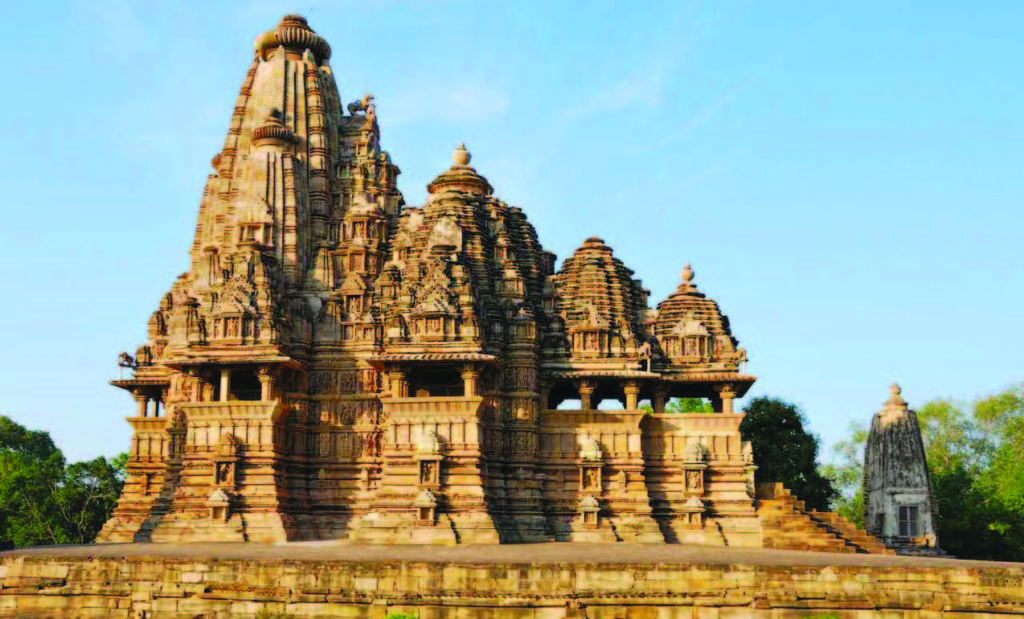
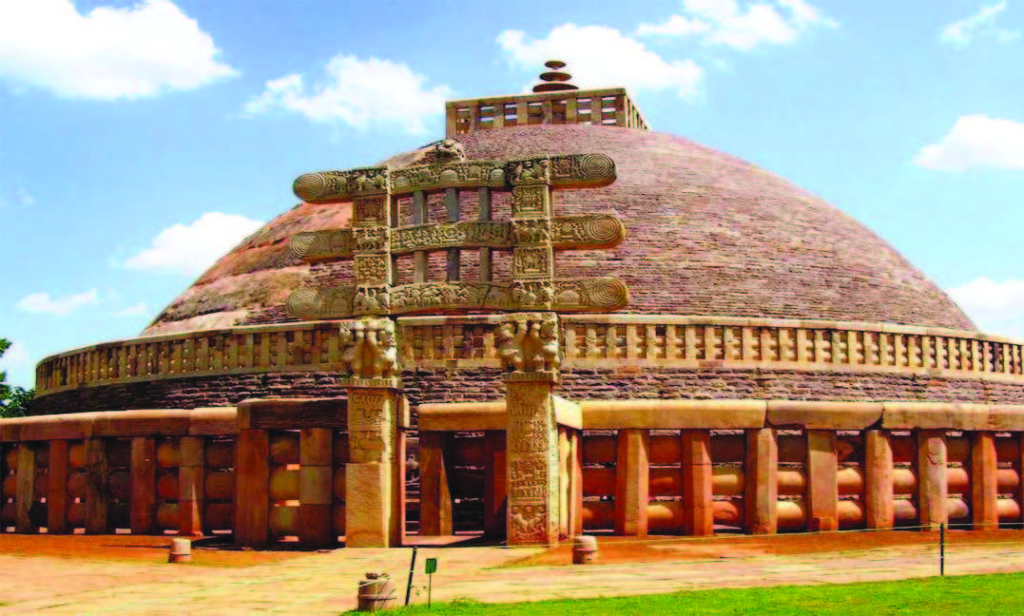
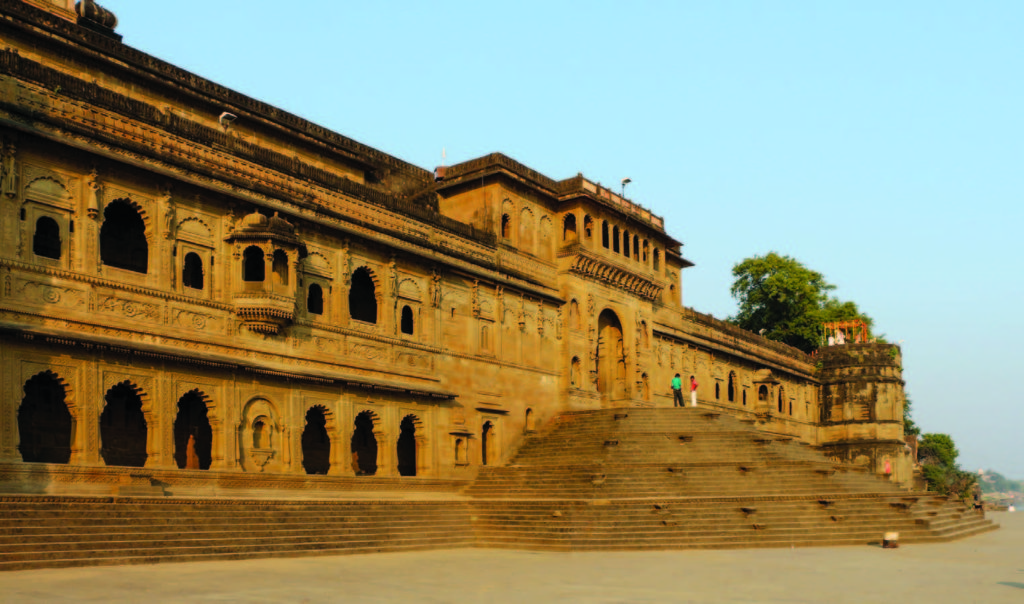
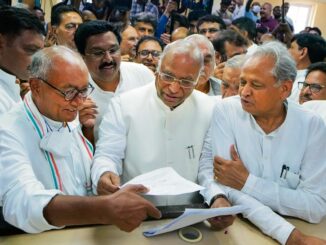


Be the first to comment